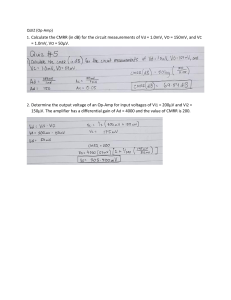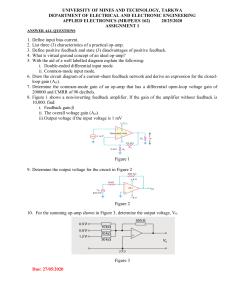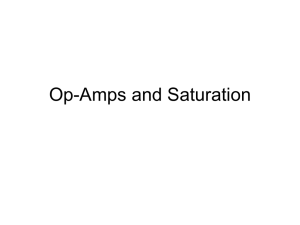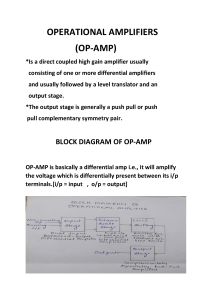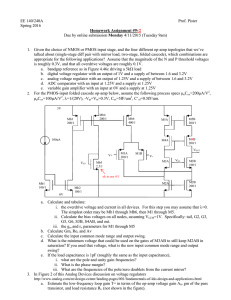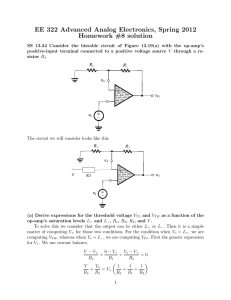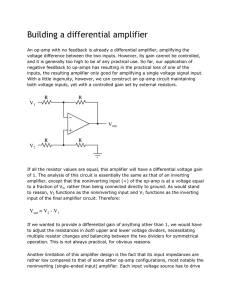MASSACHUSETTS INSTITUTE OF TECHNOLOGY THE GOLDEN RULES OF OP-AMPS
advertisement
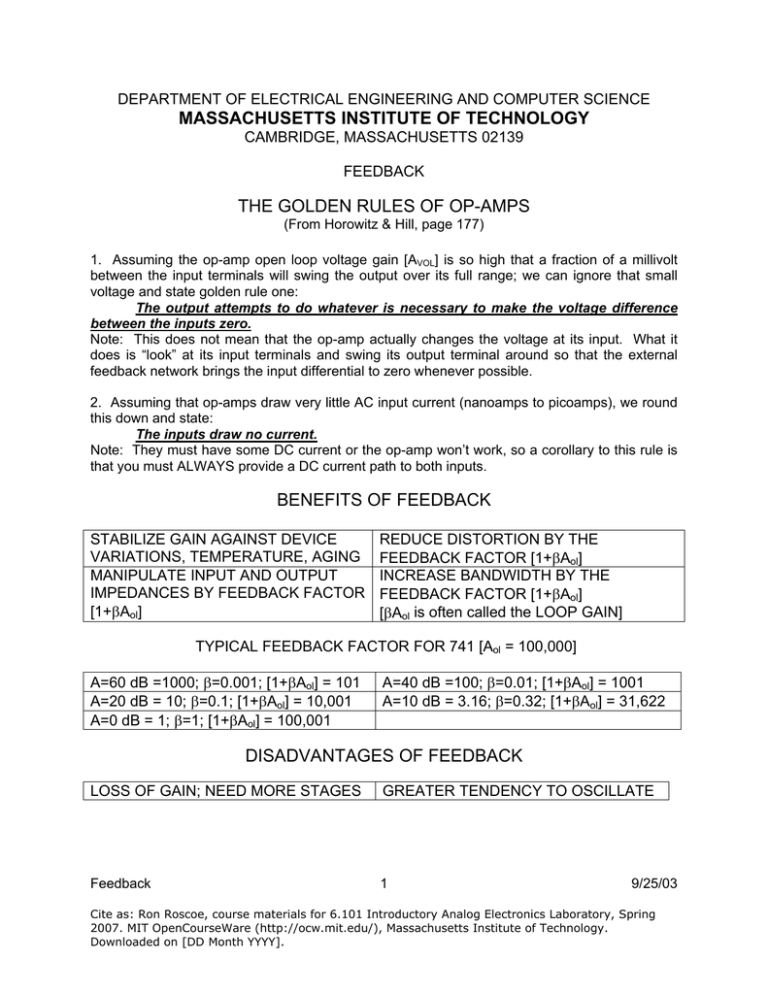
DEPARTMENT OF ELECTRICAL ENGINEERING AND COMPUTER SCIENCE MASSACHUSETTS INSTITUTE OF TECHNOLOGY CAMBRIDGE, MASSACHUSETTS 02139 FEEDBACK THE GOLDEN RULES OF OP-AMPS (From Horowitz & Hill, page 177) 1. Assuming the op-amp open loop voltage gain [AVOL] is so high that a fraction of a millivolt between the input terminals will swing the output over its full range; we can ignore that small voltage and state golden rule one: The output attempts to do whatever is necessary to make the voltage difference between the inputs zero. Note: This does not mean that the op-amp actually changes the voltage at its input. What it does is “look” at its input terminals and swing its output terminal around so that the external feedback network brings the input differential to zero whenever possible. 2. Assuming that op-amps draw very little AC input current (nanoamps to picoamps), we round this down and state: The inputs draw no current. Note: They must have some DC current or the op-amp won’t work, so a corollary to this rule is that you must ALWAYS provide a DC current path to both inputs. BENEFITS OF FEEDBACK STABILIZE GAIN AGAINST DEVICE VARIATIONS, TEMPERATURE, AGING MANIPULATE INPUT AND OUTPUT IMPEDANCES BY FEEDBACK FACTOR [1+βAol] REDUCE DISTORTION BY THE FEEDBACK FACTOR [1+βAol] INCREASE BANDWIDTH BY THE FEEDBACK FACTOR [1+βAol] [βAol is often called the LOOP GAIN] TYPICAL FEEDBACK FACTOR FOR 741 [Aol = 100,000] A=60 dB =1000; β=0.001; [1+βAol] = 101 A=20 dB = 10; β=0.1; [1+βAol] = 10,001 A=0 dB = 1; β=1; [1+βAol] = 100,001 A=40 dB =100; β=0.01; [1+βAol] = 1001 A=10 dB = 3.16; β=0.32; [1+βAol] = 31,622 DISADVANTAGES OF FEEDBACK LOSS OF GAIN; NEED MORE STAGES GREATER TENDENCY TO OSCILLATE Feedback 1 9/25/03 Cite as: Ron Roscoe, course materials for 6.101 Introductory Analog Electronics Laboratory, Spring 2007. MIT OpenCourseWare (http://ocw.mit.edu/), Massachusetts Institute of Technology. Downloaded on [DD Month YYYY].
